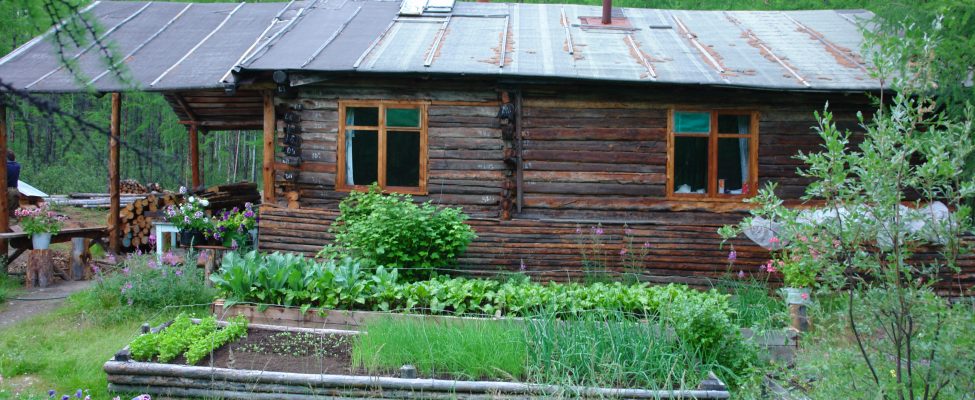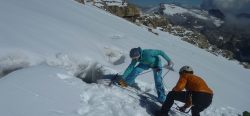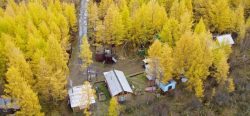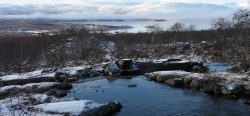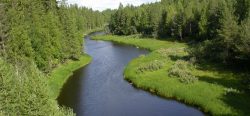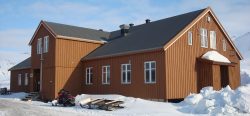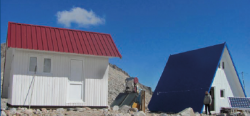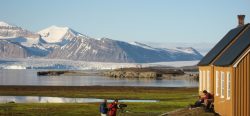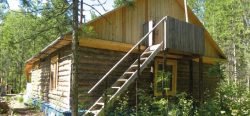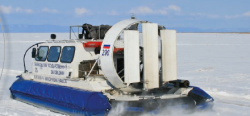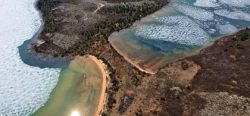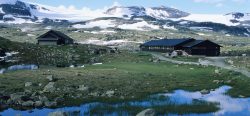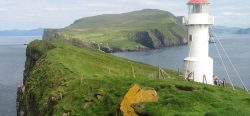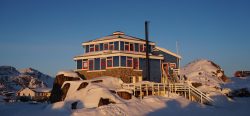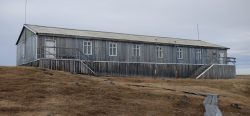Collaborator in the project until spring 2022
STATION NAME AND OWNER
Orotuk Field Station is run by the Institute of Biological Problems of the North, Far Eastern Branch of Russian Academy of Sciences.
LOCATION
The station is in the Upper Kolyma district, western part of the Magadan Region, Russia (62°03’ N, 148°38’ E). The station is situated 10 km southwest of the Orotuk settlement (30 inhabitants).
BIODIVERSITY AND NATURAL ENVIRONMENT
The Kolyma River floodplain terraces form the typical landscape in the territory. The floodplain is covered by willow, poplar, and Chosenia forests. Numerous lakes, meadows, and swamps can be found on the terraces along the river. Relic steppe communities occur on southwest facing slopes and Pinus pumila thickets and sparse larch forests are the main plant communities of the region. The southern part of the Czersky Mountain range is situated 10 km northwest of the station. The mountain tundraA type of ecosystem in which tree growth is limited by low temperatures. The origin of the word is from from the Kildin Sami word t?ndâr, meaning "uplands" or "treeless mountain tract". In the northern... More is dominated by various herbs, while dwarf shrubs and lichens cover slopes and depressions. The floraThe plants that live in a particular region, habitat or time (such as geological period like the jurassic). For animals, we use the term fauna, and to collectively refer to all... More and faunaThe animals that live in a particular region, habitat or time (such as geological period like the jurassic). For plants, we use the term flora, and to collectively refer to all... More are typical for the northern part of the borealNorthern, from Boreas, the Greek god of the north wind.... More zone. The vegetation belongs to the northern taigaBoreal forest, a nearly continuous belt of coniferous trees across North America and Eurasia. Taiga is dense forest with many fallen trees and marshy soil. The term derives form the southern Siberian Turkic-Mongol... More and sparse Larix forest zone. The continental part of Northeast Asia belongs to the region of extra continental climateThe average weather we would expect over a long period of time (seasons, years, decades). Climate varies from place-to-place across the Earth. Climate is determined by long-term (over at least... More with very severe winters (down to -55-60 °C) and hot summer (up to 30-33 °C). The entire territory is in the continuous permafrostPermafrost is frozen ground that remains at or below zero degrees Celsius (32 degrees Fahrenheit) for two or more years. It forms in regions where the mean annual temperature is... More zone.
HISTORY AND FACILITIES
The station was established in 1992 and first served as a field station for the North-East PermafrostPermafrost is frozen ground that remains at or below zero degrees Celsius (32 degrees Fahrenheit) for two or more years. It forms in regions where the mean annual temperature is... More Laboratory, later for the Laboratory of Botany (since 1995). The station accommodates 7-8 people, has a dining room and outside toilets. The station has a building in the settlement of Orotuk, suitable for winter accommodation. In summer, two greenhouses are also in use.
GENERAL RESEARCH AND DATABASES
Meteorological observations have been recorded since 1992. The seasonal development of 33 species of trees, shrubs, and grasses are also studied. Phenological data is used for monitoring of Climate ChangeAccording to the United Nations Framework Convention on Climate Change, climate change is change in the climate of the whole Earth or a region of the Earth that is believed... More effects. Non-forest plant resources are studied in permanent sample plots. The flowering phenologyThe study of the timing of recurring natural events such as bud opening, egg laying or the arrival of a migratory animal. Many living organisms have defined life cycle events... More and dynamics of yield are monitored for edible berries and mushrooms.
HUMAN DIMENSION
In the middle of 19th century Sakha people drove from the plains of Jakutia to the far northeast and settled near Kolyma River. Now, they live in small villages. Hunting, fishing, and picking wild berries and mushrooms are very important activities.
ACCESS
Orotuk is located 280 km northwest of the town Ust-Omchug (administrative centre of Tenkinsky District, Magadan region). In winter, the station can be reached by car, and in May-September only by boat. The average time by boat from the Duskanya Bay to Orotuk is about 2 hours.
